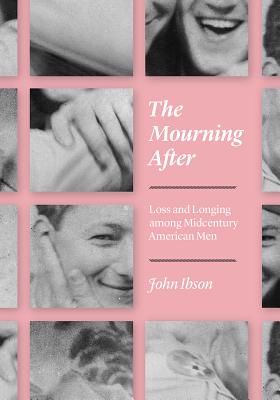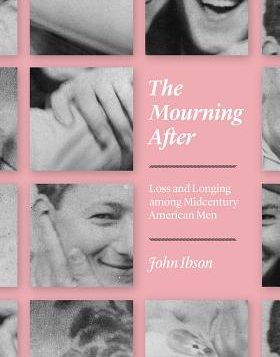 The Mourning After: Loss and Longing
The Mourning After: Loss and Longing
among Midcentury American Men
by John Ibson
Univ. of Chicago. 260 pages, $35.
Ibson, professor emeritus at Cal State Fullerton, builds his case about what happened in the war’s aftermath by examining a wide range of what he calls “cultural documents.” These include everyday photographs, works of fiction and their reviews, books on psychology and child-rearing, personal letters, memoirs, and documentary films. This is a heavily researched academic study, but the writing is always clear and at times moving. Ibson ranges over so much material developing his thesis that his five chapters feel somewhat cobbled together. Still, the result is a powerful analysis of the isolation that many American men still experience today.
The author, whose 2002 book Picturing Men examined photographs taken between 1850 and 1950, belongs to a recent academic field that studies “vernacular photographs” for the evidence they contain about cultural norms. In his first chapter, he examines snapshots of men in pairs or in groups, taken from the 1940s through the 1950s to show how the space between men in everyday photographs increased in the years after the war. Drawing from his collection of 10,000 images, he contrasts smiling young soldiers with their arms around each other with postwar men keeping a safe distance as they pose in front of new automobiles or shirtless at summer camp. Ibson makes a convincing case that facial expressions, body language, and positioning between people in these photographs reveal a cultural change: the loss of comfortable male closeness. Given the limited sample of photos presented in the book, skeptics may question whether Ibson is overgeneralizing. That said, the images are engrossing regardless of how they’re interpreted.
Ibson devotes three chapters to the careers of writers John Horne Burns and Gore Vidal. Drafted in 1942, Burns served in North Africa and Italy but did not see combat. In 1947, he published his first novel, The Gallery, to great acclaim. The book, which is about American soldiers stationed in North Africa and occupied Naples, contains a daring chapter set in a gay bar and many instances of male affection and same-sex attraction. Sex dominates the novel: the American soldiers barter for it, and the Italians teach them that making love can be more than a quick orgasm. The author makes a strong case that Burns used foreign settings and characters to comment on the bigotry and provincialism of American culture.
Burns would face personal and professional destruction after the publication of The Gallery, which Ibson attributes to the homophobia of the time. By contrasting favorable reviews of this novel with the vicious attacks on the two that followed, Lucifer with a Book and A Cry of Children, Ibson shows what happened to a writer who dared to write openly about sexual relationships between men who were no longer away at war but living at home. Burns was undeniably a victim of prejudice, but his difficult personality and limitations as a writer contributed to his problems. Alcoholism led to his early death in 1953. Ibson makes the case that the final two novels contain important critiques of American attitudes toward education and religion, but the books have undeniable flaws, and both are long out of print.
Gore Vidal, on the other hand—after the critical outrage that greeted The City and the Pillar, his (in)famous 1948 novel about an openly gay man—made strategic decisions that enabled him to survive as a writer. Same-sex relationships did not disappear from his fiction, but they became passing phases on the path to heterosexuality. Vidal also took refuge in historical fiction, in which midcentury norms played no role. Ibson is sympathetic to Burns, a man conflicted by his homosexuality but unwilling to deny it or write conventional books. Vidal expressed his disdain for effeminate men and boasted of playing only the active role in sex. He was in Ibson’s opinion a conventional man of the ’50s, and he survived that repressive decade to have a long and successful career.
The final chapter of The Mourning After provides evidence from many sources to characterize American manhood at midcentury, making the crucial point that the notion of a fixed sexual orientation had gained currency, primarily through the efforts of military psychiatrists to identify homosexuals and exclude them from service. In the postwar years, psychiatrists classified homosexuals as mentally ill and a danger to society. For the first time, Americans were warned that “perverts” were in their midst. Close male friendships were suspect, and parents were warned to watch for signs that they might have a “sissy son.” Boys were expected to imitate their fathers and avoid close physical or emotional contact with other boys. Many gay men retreated into the closet.
Ibson presents much familiar material, such as the scapegoating of homosexuals and communists. What is new here is his perspective on World War II veterans. They experienced intense fellowship during the war only to return to a country that rejected male intimacy. Many suffered from psychological turmoil that was never addressed. They retreated into lonely isolation, unable to share what they had been through with their wives and children and fearful of forming bonds with other men. In silence, they mourned their lost buddies. Ibson gives the lie to the “patronizing pieties about the so-called greatest generation” promulgated by writers and filmmakers such as Tom Brokaw and Ken Burns, who never saw combat. In his attempt to acknowledge what that generation actually experienced, Ibson’s passion sometimes comes close to polemical. Given the suffering and thwarted lives so many endured, who is to say this is inappropriate?
Daniel Burr is a frequent contributor to this magazine.






